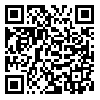Volume 25, Issue 97 (7-2025)
refahj 2025, 25(97): 285-314 |
Back to browse issues page
Download citation:
BibTeX | RIS | EndNote | Medlars | ProCite | Reference Manager | RefWorks
Send citation to:



BibTeX | RIS | EndNote | Medlars | ProCite | Reference Manager | RefWorks
Send citation to:
gholami S, Modiri A, Tayebi A. (2025). The Right to the City in Iran's Media Discourse: A Tool for Awareness or Social Control?. refahj. 25(97), : 10 doi:10.32598/refahj.25.97.4625.1
URL: http://refahj.uswr.ac.ir/article-1-4411-en.html
URL: http://refahj.uswr.ac.ir/article-1-4411-en.html
Abstract: (1563 Views)
Introduction: This study examines how Iranian media shape the discourse of the Right to the City, questioning whether they function as tools for public awareness or instruments of social control. Recognizing the growing role of media in urban governance, the study applies Norman Fairclough’s Critical Discourse Analysis (CDA) to explore how official media, independent platforms, and civil society activists construct competing narratives around urban rights and citizen participation.
Method: Using Fairclough’s three-level CDA framework—textual, discursive, and social context analysis—the study analyzes 182 media texts from 2001 to 2021. These texts, drawn from state-controlled and independent outlets, were purposefully selected to reflect divergent approaches to urban discourse. The analysis focuses on language use, ideological framing, and the broader political context shaping representations of urban rights.
Findings: The results show a clear division between media types. Official outlets emphasize “public order” and “social stability,” framing urban protests as threats and reinforcing a security-oriented narrative. In contrast, independent media and civil society use justice-based language—e.g., “social justice,” “citizen participation”—to promote inclusive governance. Digital platforms further amplify these alternative voices, providing space for public dialogue and activism.
Discussion: Media discourse on urban rights in Iran reflects broader power dynamics. State media reproduce hegemonic narratives aligned with government policy, while independent platforms act as counter-hegemonic agents promoting civic engagement. The study emphasizes the transformative role of digital media and calls for policy reforms, media pluralism, and stronger citizen participation to support equitable urban development.
Method: Using Fairclough’s three-level CDA framework—textual, discursive, and social context analysis—the study analyzes 182 media texts from 2001 to 2021. These texts, drawn from state-controlled and independent outlets, were purposefully selected to reflect divergent approaches to urban discourse. The analysis focuses on language use, ideological framing, and the broader political context shaping representations of urban rights.
Findings: The results show a clear division between media types. Official outlets emphasize “public order” and “social stability,” framing urban protests as threats and reinforcing a security-oriented narrative. In contrast, independent media and civil society use justice-based language—e.g., “social justice,” “citizen participation”—to promote inclusive governance. Digital platforms further amplify these alternative voices, providing space for public dialogue and activism.
Discussion: Media discourse on urban rights in Iran reflects broader power dynamics. State media reproduce hegemonic narratives aligned with government policy, while independent platforms act as counter-hegemonic agents promoting civic engagement. The study emphasizes the transformative role of digital media and calls for policy reforms, media pluralism, and stronger citizen participation to support equitable urban development.
Article number: 10
Keywords: critical discourse analysis, media discourse, Right to the city, social control, social justice.
Type of Study: orginal |
Received: 2024/11/24 | Accepted: 2025/03/12 | Published: 2025/07/6
Received: 2024/11/24 | Accepted: 2025/03/12 | Published: 2025/07/6
Send email to the article author
| Rights and permissions | |
 |
This work is licensed under a Creative Commons Attribution-NonCommercial 4.0 International License. |








